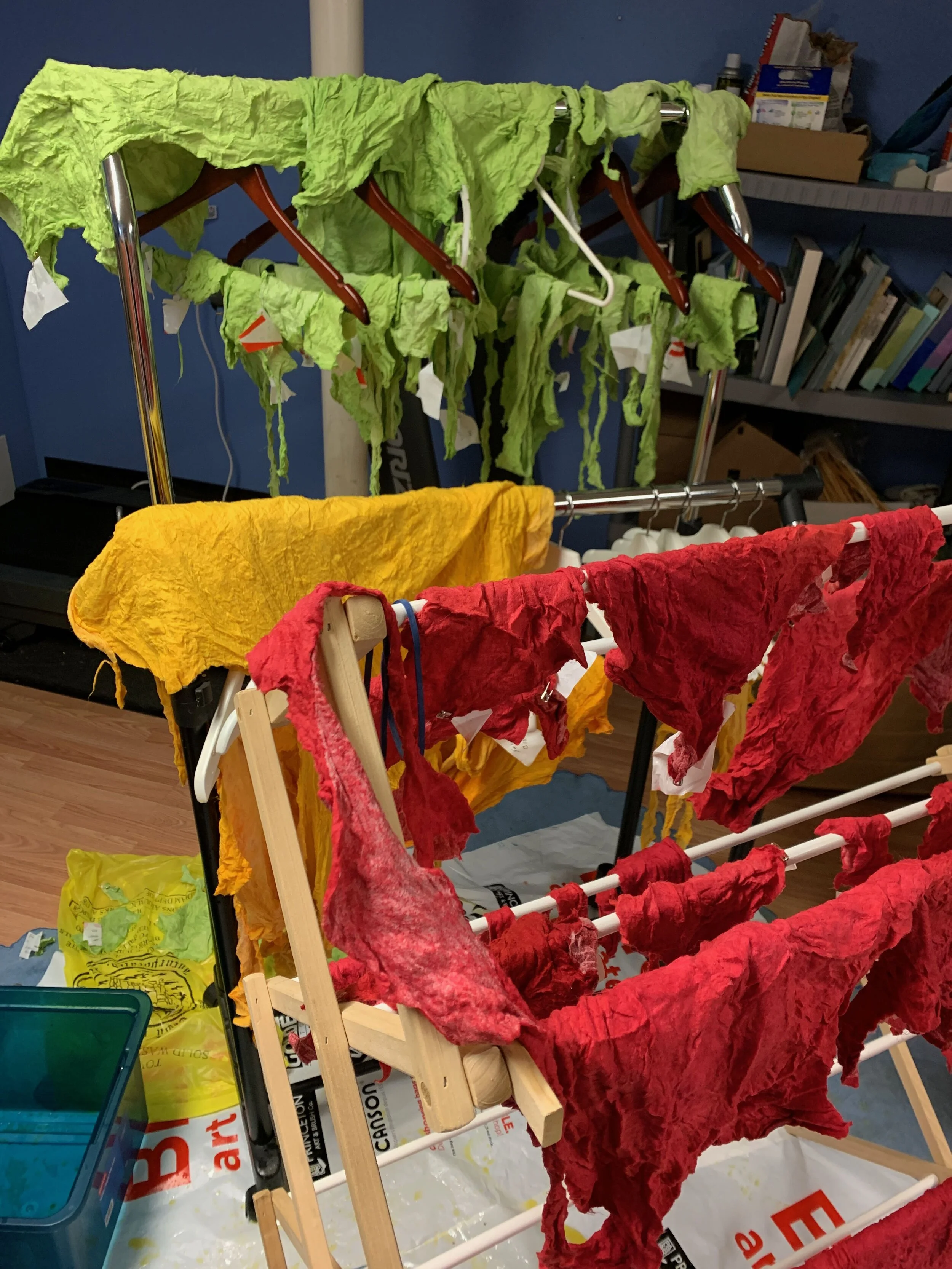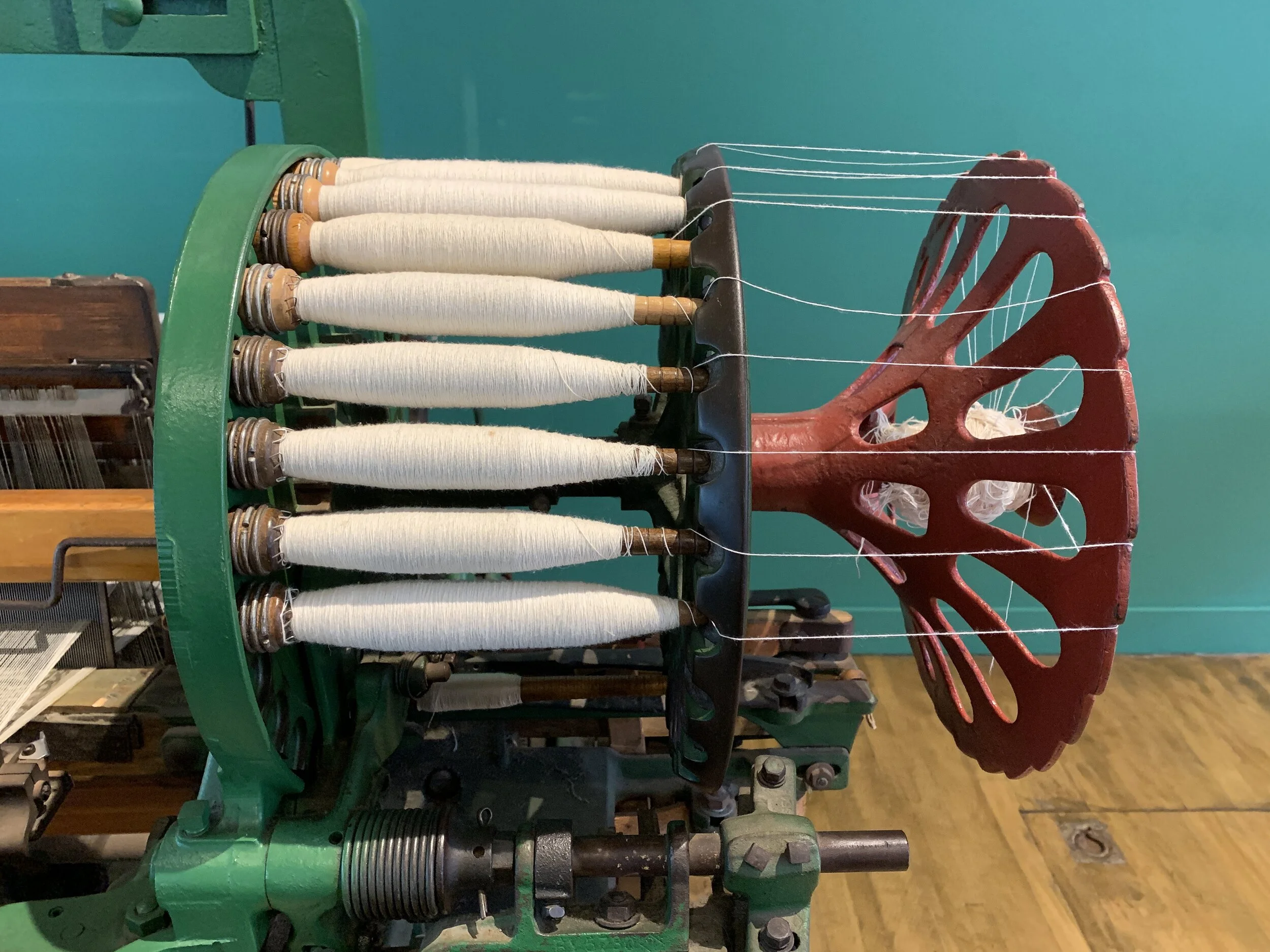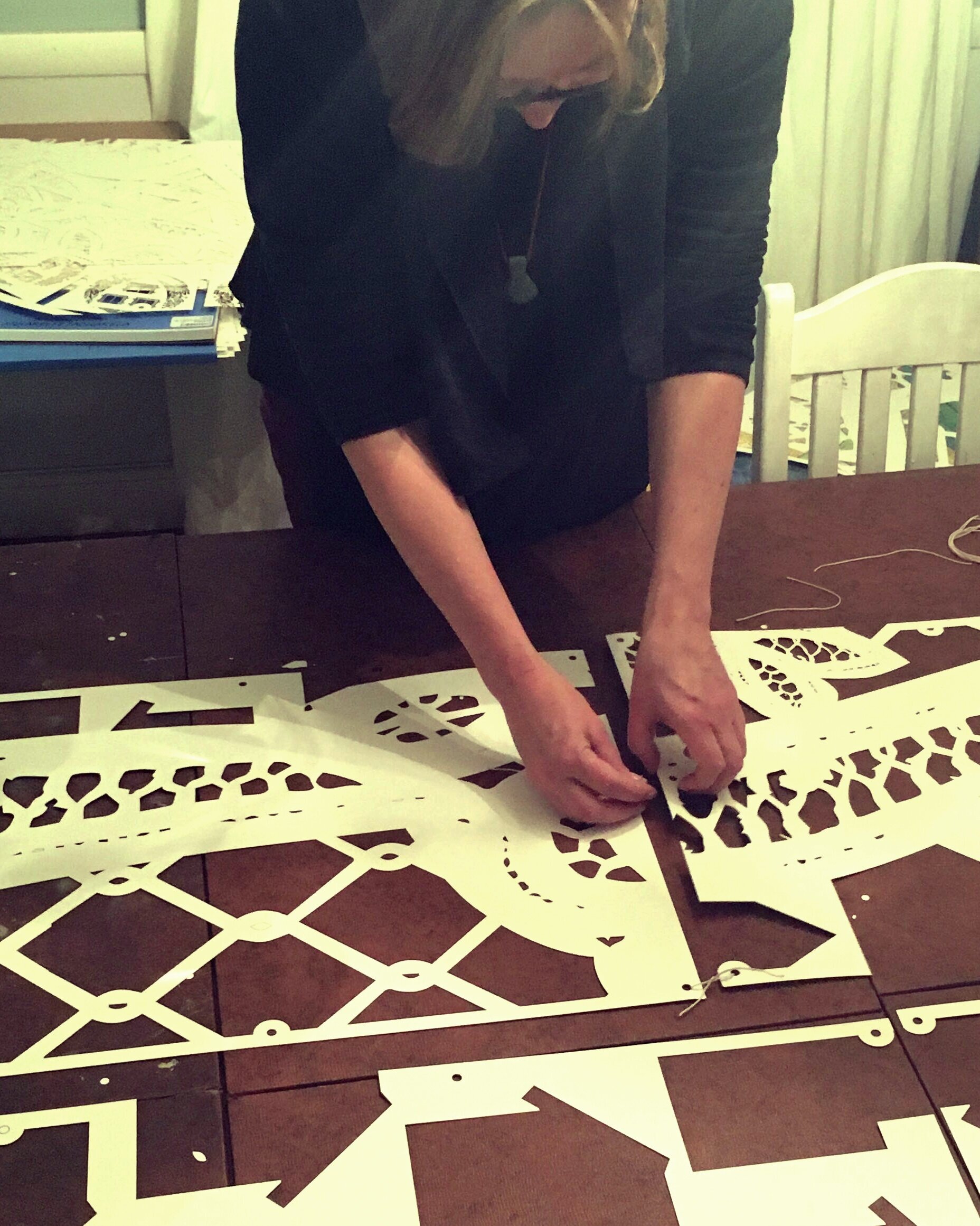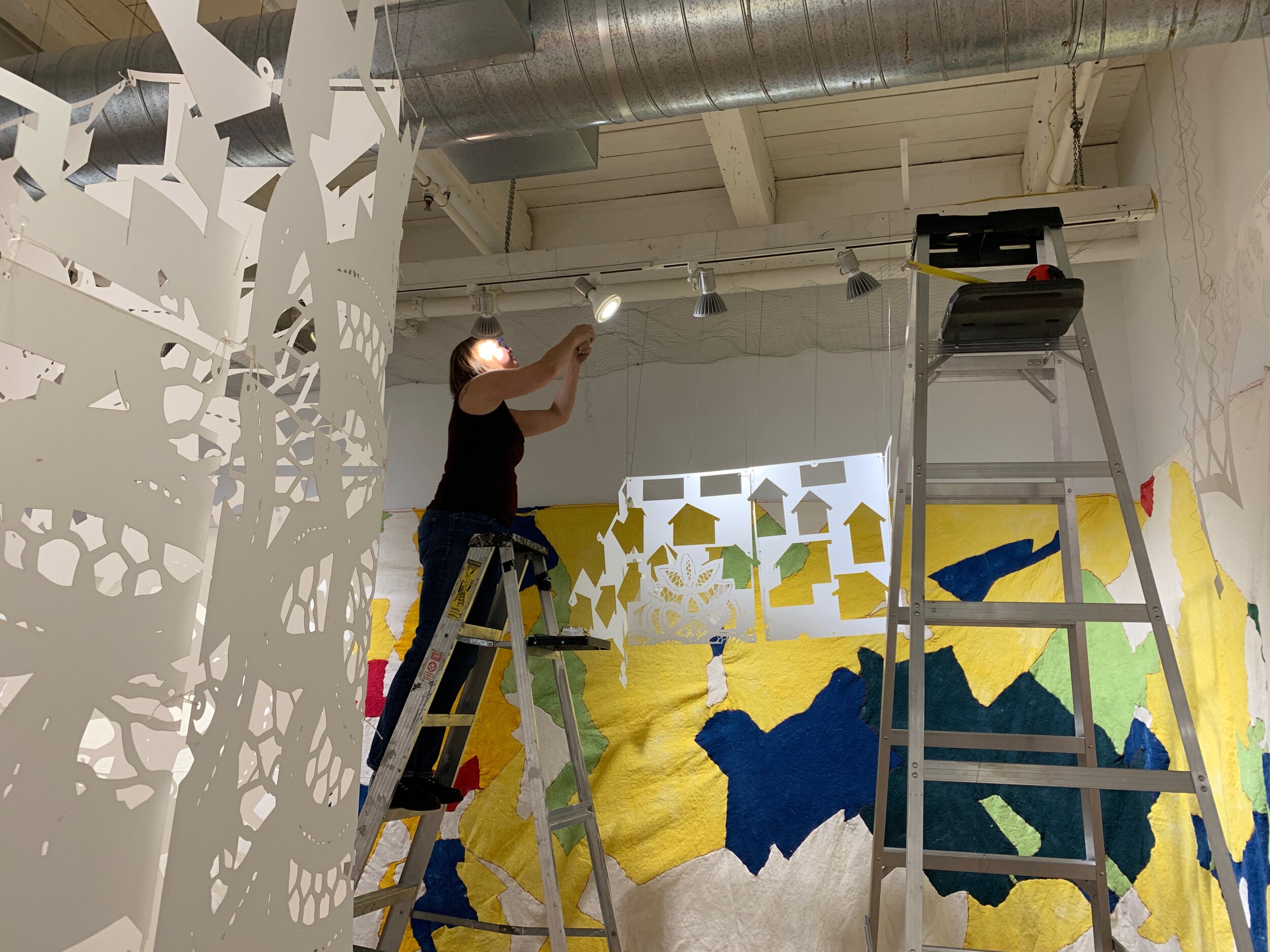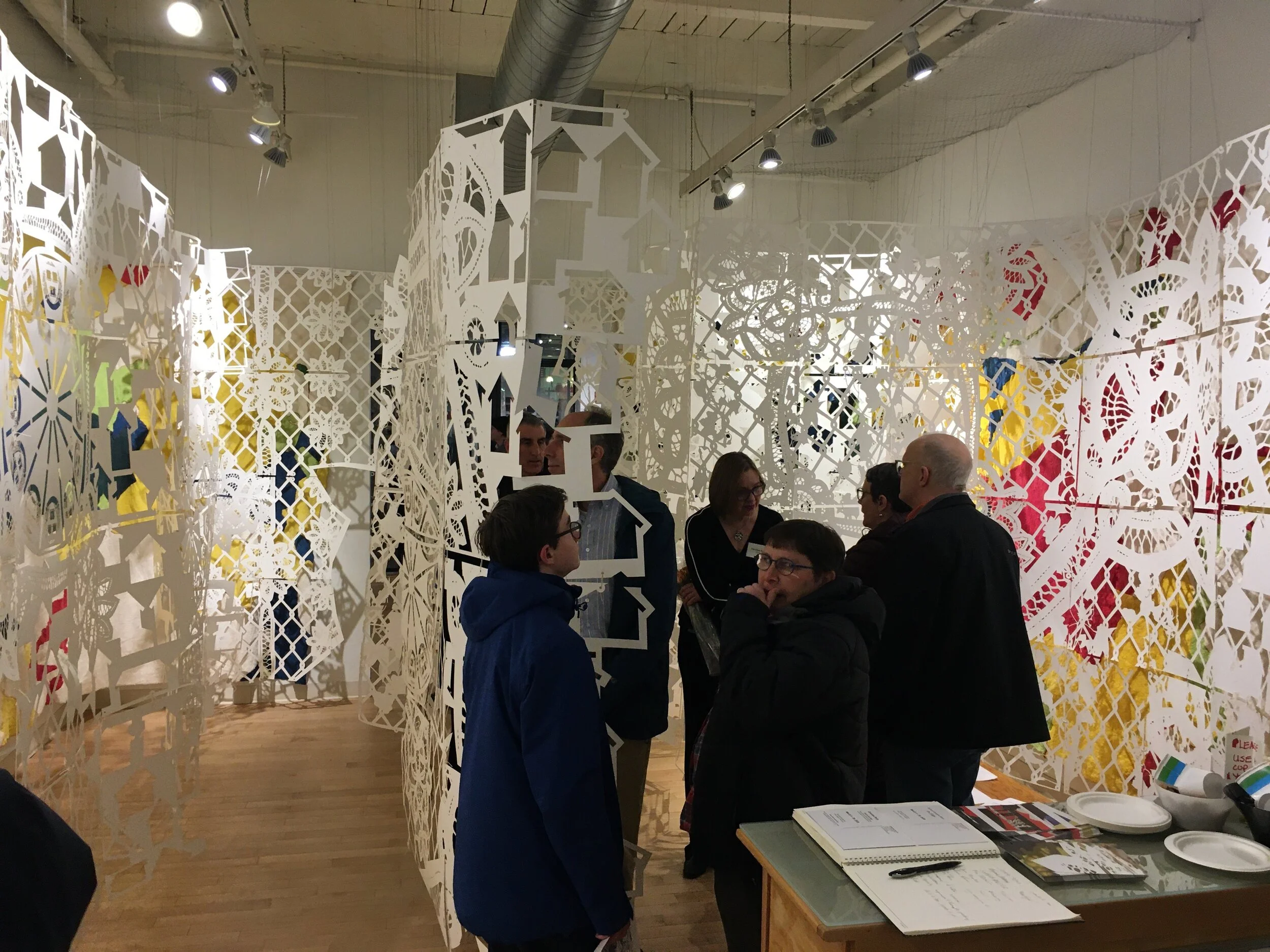The left wall shows part of the enlarged redline map of Greater Boston. The map is made from hand dyed cotton batting.
After the batting is cut into the shapes from the map, it was dyed and is shown here drying.
Once dry, it was pieced and pinned together before being stitched.
Sketches of cotton bolls drawn from samples held in the RISD Nature Lab.
The panels are numbered and lettered to help keep track of placement.
A spindle wheel from the Lowell Mills National Park, Lowell, MA.
Piecing the walls together before bringing them to the gallery. Each panel is attached using cotton string.
The artist hanging panels during the installation of the piece.
When I started work on this piece in the summer of 2018, I began by asking myself the question 'How did I end up living and working in mostly white environments?'. It had never been my goal. One answer is that the path of least resistance for a white person leads to a segregated life and to the invisibility of racism within that life. Another answer is that racist financial and governmental policies designed to benefit white people created this situation. Both are true.
Redlining
In this installation, I use the 1937 HOLC redline map of Greater Boston as a visual representation of systemic racism. The original Redline maps were created as part of the New Deal, and they were used by insurance companies and banks to prevent black people and other marginalized groups from receiving mortgages or buying property in white majority neighborhoods.
Here are a few resources for learning about the history and impact of redlining:
The Mapping Inequality website.
“How Decades of Racist Policy Left Neighborhoods Sweltering”, By Brad Plumer and Nadja PopovichPhotographs by Brian Palmer. New York Times, August 24, 2020.
Washington Post, March 2018 “Redlining was banned 50 years ago. It’s still hurting minorities today.”
NY Times, June 2020 “Banks Should Face History and Pay Reparations”
Book: “The Color of Law” by Richard Rothstein
For a look at the long impact of redlining, this article traces the impact of climate change on communities. Previously redlined communities are impacted at a much higher rate. “How Climate Migration Will Reshape America”, NY Times September 2020.
I recreated the redline maps using hand-dyed, cotton batting. Cotton batting is typically used on the inside of quilts. Quilting is an art form that has been practiced by non-professional artists, usually women throughout US history. Quilts are often designed to tell stories. My quilt is a deconstructed object. In the installation, even though the quilt is exposed to reveal the maps, the paper cut outs frame and obscure the view of the maps.
Paper Cut-outs
I began designing the paper cut outs by drawing images of items I wanted to include. The images in the paper cut outs are cotton plants, house shapes, lace patterns and chain link fence. Later I would add the school crest of Harvard University to the collection of images. Cotton is an especially important element in the piece because of the history of cotton in the United States. I visited the Lowell Mills while doing my research. Profits from the labor of enslaved people were reaped in the northern US through the manufacture of cloth and clothing, much of which was sold as garments for enslaved people.
Every part of the installation is made from cotton (cotton batting, cotton thread, watercolor paper, and twine). The hanging threads in the Lowell Mill loom rooms inspired the way the panels were hung up in the installation.
I combined the drawings digitally to create the paper lace panels, and laser cut the designs. Each panel is 18”x24”. The panel walls are 4 sheets high, so they hang at about 8.5 feet tall.
Imagery
Battenberg lace is one of the few cotton lace designs. It is an American design, but it was named for Victorian royals in the early part of the 20th century. It connotes lace curtains and table linens. It was an aspirational fabric for the middle class. But woven into the lace designs are images of chainlink fence. The soft fabric barrier that might allow a person to choose whether or not to see out of a window or be seen within their home, is contrasted with the hard metal barriers we construct in urban settings. The houses and the Harvard University pennants point to the ways that education and decent housing are not equally available to everyone in the USA. The college insignia especially refers to the sense of scarcity people have in the college admissions process.
In Conclusion
The true story about white prosperity is that it is built upon the unseen and unfairly compensated labor of black and brown people, and the biased promotion and protection of white people. The enormous negative impact of this history and of current racist policies is shown in health, education, criminal justice and career outcomes. While no one alive today created the racist system we live with, white people continue to benefit from it. And so it is our responsibility to dismantle it.


